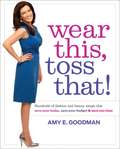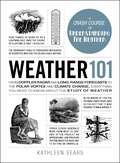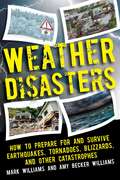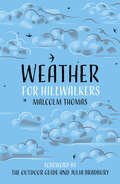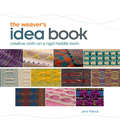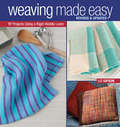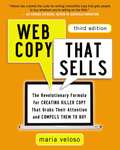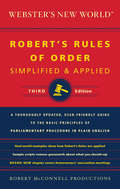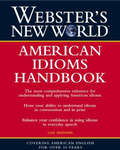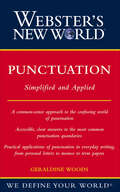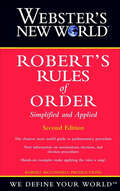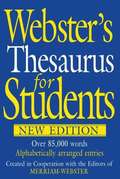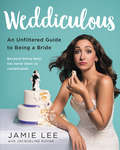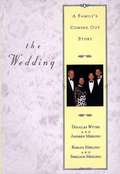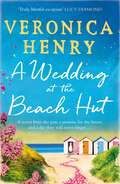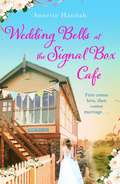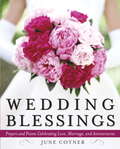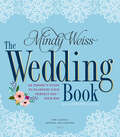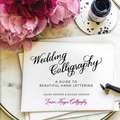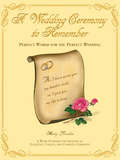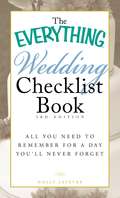- Table View
- List View
Wear This, Toss That!
by Amy E. GoodmanIt costs us not to look our best! Dressing poorly costs us interviews, first impressions, money . . . and a whole lot more. But you can look good all the time, asserts Amy E. Goodman, the magazine maven and style expert who's a regular on NBC's Today show. Her one-stop fashion and beauty book cuts through the information overload to teach you how to dress to impress whatever your age, lifestyle, or size--while staying true to yourself and your budget. Who can afford clothes and makeup that don't fit or flatter? Since every piece needs to count, Amy uses snappy, clear comparisons to show how to regain control of your wardrobe and beauty shelf by simplifying your choices. Cleverly organized like a woman's closet, wear this, toss that! outlines the 30 pieces of clothing and 30 accessories plus beauty basics every woman must own. Then Amy builds beyond the essentials, walking you through your closet, rack by rack, shelf by shelf, and drawer by drawer, telling you what to wear and what to toss. By sorting through the items you already have and taking inventory of what you need, you can build upon what you own and finally create the winning total look you've always dreamed of! Amy provides immediate style answers for real women: * 700 wear/toss items * Over 1,000 product suggestions * You-heard-it-here-first steals and deals * On-sale items to avoid regardless of price * Styling tips for every body type * The ultimate shoe guide: you'll never question which footwear is right again! * 24 "save-me" products to rescue you from any fashion emergency Filled with candid tips from pro stylists and designers, along with Amy's unfiltered guidance, wear this, toss that! will inspire you to invest in yourself, shake off the wardrobe blahs, and wake up your looks from head to toe. Step into your closet. Do you have: A ruffled tank that sweetly frames your faceor a blouse with overpowering ruffles? A long cardigan that graces over your curves or a super drapey wrap that resembles a blanket? A pencil skirt that lands just above your knees or a bell skirt that bunches at your middle? A cropped, straight-leg pant with a flat front or wrinkled, baggy cargo pants? A shade of red lipstick that says "bombshell" or one that's says "I'm trying too hard"? If any of these questions make you cringe, then wear this, toss that! is your go-to guide. It's for women of any size, age, or lifestyle who realize they just don't like the clothes, accessories, or makeup they're wearing and want to make a change. Almost instantly you'll learn what works, what's got to go, and why.
Weather 101: From Doppler Radar and Long-Range Forecasts to the Polar Vortex and Climate Change, Everything You Need to Know about the Study of Weather
by Kathleen SearsLearn the science behind weather and weather prediction in this clear and straightforward new guide.Weather is everywhere, and while it’s typically not thought about most of the time, it can get everyone’s attention in an instant—whether it’s the swirling destruction of a tornado, the wreckage from a hurricane, or the havoc of climate change on the environment. Weather 101 gives you the basics on weather, from blue skies to hail to dust storms, with information on the science of how weather works, how to predict the weather in your area, how to be ready for natural disasters, and how climate change is affecting weather patterns across the world. With this guide, you’ll be a weather expert in no time!
Weather Disasters: How to Prepare For and Survive Earthquakes, Tornadoes, Blizzards, and Other Catastrophes
by Mark D. Williams Amy Becker WilliamsFloods. Blizzards. Landslides. Earthquakes. Tornadoes. Hurricanes. Severe weather happens every day across the globe. We see and hear of the devastating consequences whenever we tune into the evening news: property ravaged, communities destroyed, and lives lost. But although these events are unstoppable, you can prepare. In Weather Disasters, veteran authors and disaster survivors Mark and Amy Williams provide vital information on prepping for and surviving every major type of weather disaster. Each chapter is devoted to a different catastrophe, and lists: The science behind the catastrophe Essentials you’ll need to get through it Helpful prepping tips Statistics behind the disaster Resources to reach out to for help What to do in the aftermath No matter who you are or where you live, catastrophe can strike at any time. Be prepared, and pick up Weather Disasters today!
Weather for Hillwalkers
by Malcolm Thomas Julia Bradbury The Outdoor GuideFor years hillwalkers and climbers have struggled to understand the complexities of weather systems. Written by a professional weather forecaster, Weather for Hillwalkers provides invaluable insight to the beginner and veteran alike.Now in a new edition, Malcolm Thomas offers an understanding of the principles of the elements – the causes of wind, rain, snow, cloud, fog, thunder and clear skies – and looks at how they are affected by mountains and high ground. Readers will learn the terminology of depressions, warm and cold fronts, air masses and more; how to interpret weather maps; and how to make short-term weather forecasts from observations. This is essential reading for those tackling the elements amongst the hills.
The Weaver's Companion
by Marilyn MurphyAll the basics of weaving are provided in this succinct handbook. Filled with definitions and illustrations, the book invites weavers to refer to it as they work.
The Weaver's Idea Book: Creative Cloth on a Rigid Heddle Loom
by Jane PatrickNew and experienced weavers alike are always on the lookout for new weave-structure patterns. The Weaver's Idea Book presents a wide variety of patterns for the simple rigid-heddle loom, accompanied by harness drafts for multishaft looms. The techniques include leno, Brooks bouquet, soumak, and embroidery on fabric. Each chapter contains weaving patterns along with swatches illustrating the techniques, accompanied by step-by-step photography.The book is arranged by structure or type of weave, from variations on plain weave to doubleweave. With traditional patterns from around the world, bands, and fabrics woven on two double heddles, The Weaver's Idea Book brings together a variety of ways to create exquisite cloth. Weaving tips and tricks help weavers at all levels achieve their textile dreams. In addition to pattern drafts, Jane offers project ideas that guide the reader through creating functional woven projects, from wearables to home decor.Weaving, especially on rigid-heddle looms, is enjoying a resurgence, and contemporary weavers are in need of a book to bridge the divide between basic books and complex text designed for advanced weavers with sophisticated tools. Celebrating the immense potential for creativity possible with the simplest of tools, The Weaver's Idea Book eBook opens new avenues for exploration on both the rigid-heddle and multishaft looms.
Weaving Made Easy Revised and Updated: 17 Projects Using a Rigid-Heddle Loom
by Liz GipsonCreate beautiful cloth with just a simple loom.This easy and accessible guide to weaving uses the simple rigid-heddle loom to create fabrics that are a perfect blend of fun and functionality. The rigid-heddle loom is small, portable, and affordable, making it the perfect starting point for anyone wanting to learn how to weave. 17 quick and easy weaving projects show how to make fabrics that are soft and drapey, sturdy and practical, or just plain fun and funky.Projects include woven scarves and belts, pillows, napkins, and hand-woven rugs. Complete, updated instructions for warping a loom, clear step-by-step photos and abundant tips, tricks, and techniques for color, design, and embellishment are included. Weaving Made Easy is the ultimate idea book for the beginning weaver.
Web Copy That Sells: The Revolutionary Formula for Creating Killer Copy That Grabs Their Attention and Compels Them to Buy
by Maria VelosoWith the rise of social networks, "Twitterized" attention spans, and new forms of video content, the techniques that worked in crafting attention-grabbing, clickable, and actionable online copy a few years ago are simply not as effective today. Thoroughly revised, the third edition of Web Copy That Sells gives readers proven methods for achieving phenomenal success with their online sales and marketing efforts. They will learn to: Use psychological tactics that compel Web surfers to buy * Create effective, highly-targeted Facebook ads * Test copy to maximize response * Write online marketing video scripts that sell * Craft compelling copy forinteractive advertising banners * Produce high-converting video sales letters * And more Proven and practical, Web Copy That Sells shows how to quickly turn lackluster sites into "perpetual money machines," streamline key messages down to irresistible "cyber bites" . . . and ensure that Web copy, e-mail, and marketing communications pack a fast, powerful - and sales generating - punch.
Webster's New World: Simplified & Applied (Webster's New World)
by Robert McConnell ProductionsA revised and updated edition of the clearest, most useful guide to parliamentary procedure, including tips on making meetings more efficient. This essential and authoritative resource, based on the principles originally laid out in the classic Robert&’s Rules of Order, explains the often-confusing rules of parliamentary procedure in clear, simple language and shows how to apply them practically and effectively. These are the principles used by organizations everywhere—from nonprofits to school boards, church groups to county commissions. Among its helpful features are sample scripts to help figure out what to say while conducting meetings, hands-on examples to show how the rules are applied, and timesaving tips to help make meetings more efficient. This thoroughly revised and updated user-friendly reference includes an ample index and cross-references for finding information quickly and easily. A completely new chapter on homeowners&’ associations covers restrictions, obligations, proxy voting, and covenants.
Webster's New World: American Idioms Handbook (Webster's New World)
by Gail BrennerThe most comprehensive reference for understanding and using the contemporary idioms of American English—with more than 1,000 entries. Mastering the use of idiomatic language is an essential step toward achieving fluency in any language. Webster's New World: American Idioms Handbook is the ideal guide to the slang, sayings, expressions, jargon, and colloquialisms of American English—covering more than 1,000 entries. Emphasizing acquisition and application, this book explains their meanings as well as when, where, why, and how to use them. A wealth of examples helps readers understand each idiom&’s connotation and identify its appropriate context. An extensive index allows for quick and easy reference.
Webster's New World Punctuation: Simplified and Applied
by Geraldine WoodsUnsure about proper punctuation? When in doubt, look it up! THE PRACTICAL, ACCESSIBLE GUIDE TO CORRECT PUNCTUATION Whether you're writing a business report or a book report, creating an article for a newsletter, writing a note to your child's teacher, a personal letter, or a cover letter, using proper punctuation helps you make your points clearly and make a good impression. This user-friendly reference helps you quickly find the commonly accepted rule for any given situation, and even explains when to make exceptions to the rules. Webster's New World Punctuation: Simplified and Applied is packed with information and features, including: An overview of the importance of good punctuation Clear, concise explanations of difficult rules Easy-to-understand examples that make applying the rules a snap Cautions that alert you to common pitfalls An overview of punctuation in common writing formats, ranging from business letters to e-mails to desktop publishing Guidelines for citations in more formal writing
Webster's New World Robert's Rules of Order Simplified And Applied: Simplified And Applied
by RM ProductionsThis is the clearest, most useful guide to parliamentary procedure, now with new information on effective and reliable procedures for nominations, elections, ballots, balloting, and ballot counting.
Webster's New World Robert's Rules of Order Simplified and Applied Second Edition
by Robert Mcconnell ProductionsProvides a summarization of Robert's Rules of Order
Webster's Thesaurus For Students
by Merriam-WebsterThis all-new edition is a must-have resource for students searching for the best word to organize and express their thoughts clearly in speech and writing. Each entry has a brief definition or shared meaning core of synonyms listed. Related words (near-synonyms) and antonyms (words of opposite meaning) help the student understand nuances of meaning. An affordable paperback, this volume is the ideal companion volume to Webster's Dictionary for Students. Features of this Book - More than 85,000 synonyms, related words, and antonyms - Alphabetically organized for quick and easy lookups.
Weddiculous: An Unfiltered Guide to Being a Bride
by Jamie Lee Jacqueline NovakIn this irreverent wedding guide, the star of Netflix’s “The Wedding Coach” and comedian Jamie Lee offers practical advice and hilarious insights on how to stay sane while planning your "big day."Weddings. What was once a beautiful celebration of a couple coming together for a lifetime of happiness has become a bit ridiculous, complete with the whimsical monogrammed mason jars and unconventional photo shoots. The Epic task of creating that special event can be nightmarish—a dizzying maze of minutiae and seemingly endless choices that might tempt you to say yes to a quickie drive-through chapel in Vegas.But weddings don’t have to be stressful. You don’t have to give in to the crazy—or give up completely. Famous funny gal Jamie Lee learned much more than she counted on pulling together her own wedding, and in Weddiculous she shares her first-hand experiences and hilarious hard-won insights with every girl who just said "yes."Jamie gives you the real low-down, puts the madness into perspective, and walks you through the process step by step in a calm, realistic, and highly entertaining way. Weddiculous includes helpful checklists, timelines, and suggestions on everything from what questions to ask vendors to how to handle difficult bridesmaids to what’s worth the extra cost (and more importantly, what’s not). Throughout, Jamie provides guidance on when you should trust your gut and when you need to listen to others.What Amy Sedaris has done for hospitality and crafting, Jamie Lee now does for weddings. Weddiculous will help remind you what’s really important about your wedding day: it’s just the first day in a long and happy marriage.
The Wedding: A Family's Coming Out Story
by Douglas Wythe Andrew Merling Roslyn Merling Sheldon Merling<p>Two people meet and fall in love. Over time, their relationship grows and they decide to spend the rest of their lives together. They plan a wedding, a formal binding into a permanent relationship with family and friends on hand as witnesses to solemn but beautiful vows. It's an occasion people dream about for most of their lives, though it is often joked that the wedding is more for the parents than the children. <p>But what if they''re gay? Andrew Merling was a graduate student in clinical psychology when he met Doug Wythe, a television promotion director. Their relationship continued for three-and-a-half years before Doug formally proposed marriage to Andrew. Together, they agreed to have a traditional affair for family and friends. While Doug was not as close to his extended family, Andrew came from large, tight-knit Jewish family in Montreal. When he announced his engagement and the couple's plans for a traditional Jewish ceremony and a festive celebration, it was then that previously unacknowledged prejudices and hidden concerns suddenly reared their contentious heads. Typical wedding conflicts over money and manners paled next to worries over whether Andrew''s parents would find themselves ostracized by their conservative community. <p>Then, just two months before the big day, the family had to decide if they were ready to perform the ultimate act of "coming out," when ABC-TV News asked to profile them as part of an episode on Turning Point, and bring national attention to their personal struggle. The first book to speak to both sides of a controversy that is altering our society, this fascinating chronicle follows Doug, Andrew, and his parents Sheldon and Roslyn on the rocky road from engagement to understanding. With the impending wedding as a catalyst, they embark on a painful, joyful odyssey of discovery, struggling both to be heard and to find acceptance from each other, their friends and communities. Their four distinct voices blend to create a unique depiction of one family coming to grips with the reality of being a gay couple in today's world.</p>
A Wedding at the Beach Hut: The feel-good read of the summer from the Sunday Times top-ten bestselling author
by Veronica HenryDiscover the gorgeous new summertime must-read from Sunday Times bestseller Veronica Henry - a holiday for the heart and soul!'A lush, inviting read that lifts the heart and spirits!' Adele Parks, bestselling author of Just My Luck---------------------------------Escape to Everdene Sands, where the sun is shining - but is the tide about to turn?Robyn and Jake are planning their dream wedding at the family beach hut in Devon. A picnic by the turquoise waves, endless sparkling rosé and dancing barefoot on the golden sand . . . But Robyn is more unsettled than excited. She can't stop thinking about the box she was given on her eighteenth birthday, and the secrets it contains. Will opening it reveal the truth about her history - and break the hearts of the people she loves most?As the big day arrives, can everyone let go of the past and step into a bright new future?---------------------------------Your favourite authors love to escape with Veronica Henry's feel-good stories!'As uplifting as summer sunshine' - Sarah Morgan'A delicious treat of a book' - Milly Johnson'An utter delight' - Jill Mansell'Truly blissful escapism' - Lucy Diamond'A heartwarming story combined with Veronica's sublime writing' - Cathy Bramley---------------------------------Praise for A Wedding at the Beach Hut!'Escape to a world where it's OK to dance barefoot on the sand - the latest feel-good instalment in the Beach Hut series' Heat'Wonderful' Daily Mail Veronica Henry really does excel in creating hugely entertaining, captivating and uplifting reads . . . Vibrant and sparkling - LoveReading'We read this brilliant book in one sitting' Bella'Another poignant, touching and feel-good book about family life from the much loved author' Women's Weekly'The perfect feel-good summer read' Fabulous, The Sun'Veronica Henry is brilliant at writing about family relationships and she's on top form here. Her descriptions of seaside life will make you yearn to move to the coast, while the intertwining story of Robyn's birth mother will bring a tear to your eye' S mag, Sunday Express'Gloriously summery' Best'The Beach Hut series is a slice of pure sunshine' Good Housekeeping'Lashings of romance...A lovely read' The Lady'A breezy, sunny tale that will whisk you away to a happy place' Sunday Mirror'Veronica Henry's descriptions of life by the sea will make you yearn to move to the coast, while the story behind Robyn's adoption will bring a tear to your eye' Sunday Express---------------------------------And other readers adore Veronica's irresistibly uplifting bestselling books too:'Amazingly heartwarming, full of families, friends and romance''Packed full of wit and charm''I loved all the rich and vibrant characters''Buy it, read it, you'll love it''One of those stories you hope will never end!'
A Wedding at the Beach Hut: The feel-good read of the summer from the Sunday Times top-ten bestselling author
by Veronica HenryDiscover the gorgeous new summertime must-read from Sunday Times bestseller Veronica Henry - a holiday for the heart and soul!'A lush, inviting read that lifts the heart and spirits!' Adele Parks, bestselling author of Just My Luck---------------------------------Escape to Everdene Sands, where the sun is shining - but is the tide about to turn?Robyn and Jake are planning their dream wedding at the family beach hut in Devon. A picnic by the turquoise waves, endless sparkling rosé and dancing barefoot on the golden sand . . . But Robyn is more unsettled than excited. She can't stop thinking about the box she was given on her eighteenth birthday, and the secrets it contains. Will opening it reveal the truth about her history - and break the hearts of the people she loves most?As the big day arrives, can everyone let go of the past and step into a bright new future?---------------------------------Your favourite authors love to escape with Veronica Henry's feel-good stories!'As uplifting as summer sunshine' - Sarah Morgan'A delicious treat of a book' - Milly Johnson'An utter delight' - Jill Mansell'Truly blissful escapism' - Lucy Diamond'A heartwarming story combined with Veronica's sublime writing' - Cathy Bramley---------------------------------Praise for A Wedding at the Beach Hut!'Escape to a world where it's OK to dance barefoot on the sand - the latest feel-good instalment in the Beach Hut series' Heat'Wonderful' Daily MailVeronica Henry really does excel in creating hugely entertaining, captivating and uplifting reads . . . Vibrant and sparkling - LoveReading'We read this brilliant book in one sitting' Bella'Another poignant, touching and feel-good book about family life from the much loved author' Women's Weekly'The perfect feel-good summer read' Fabulous, The Sun'Veronica Henry is brilliant at writing about family relationships and she's on top form here. Her descriptions of seaside life will make you yearn to move to the coast, while the intertwining story of Robyn's birth mother will bring a tear to your eye' S mag, Sunday Express'Gloriously summery' Best'The Beach Hut series is a slice of pure sunshine' Good Housekeeping'Lashings of romance...A lovely read' The Lady'A breezy, sunny tale that will whisk you away to a happy place' Sunday Mirror'Veronica Henry's descriptions of life by the sea will make you yearn to move to the coast, while the story behind Robyn's adoption will bring a tear to your eye' Sunday Express---------------------------------And other readers adore Veronica's irresistibly uplifting bestselling books too:'Amazingly heartwarming, full of families, friends and romance''Packed full of wit and charm''I loved all the rich and vibrant characters''Buy it, read it, you'll love it''One of those stories you hope will never end!'
Wedding Bells at the Signal Box Cafe: A heartwarming romantic comedy
by Annette Hannah'Brimming with friendship and romance, this lovely book will charm your heart' Milly JohnsonFall in love with this heartwarming and emotional romcom, perfect for fans of Rebecca Raisin and Victoria Walters!Here comes the bride...Lucy Woods has always dreamed of running her very own wedding venue. After moving her eight-year-old son to the countryside she's surprised to find the perfect location and her best friend, Abbie, eager to help make that dream a reality! Too bad Abbie's older brother Dominic isn't keen on Lucy or their big idea! As a divorce lawyer Dominic doesn't believe in love at first sight or wedding vows, he's seen them broken more times than he can count. But when Lucy arrives back in town, his hardened heart begins to crack. Making her dream come true is a huge undertaking, but Lucy knows that The Signal Box Café is her chance to finally make something of her life. If only the irritating (and oh-so-gorgeous) Dom didn't make her imagine wearing a white dress and walking down the aisle... Can Lucy and Dominic find a way to each other this summer or will the wedding bells chime for another couple?Annette Hannah's next deliciously heartwarming romance, The Cosy Little Cupcake Van, is available to pre-order now!***Readers have fallen in love with Wedding Bells at the Signal Box Cafe:'A gorgeous cover and a delightful read! Everything I hoped for and more''Lots of laughter, treats and special moments in this book...absolutely wonderful''I was totally overwhelmed with emotion''The relationship between Lucy and her grandad was precious, joyous and loving''Oh this book gave me some serious butterflies! Funny and romantic''This book made me laugh out loud and the character development was emotional and heartwarming''I loved everything about this heartwarming book'
Wedding Bells at the Signal Box Cafe: A heartwarming romantic comedy
by Annette Hannah'Brimming with friendship and romance, this lovely book will charm your heart' Milly JohnsonFall in love with this heartwarming and emotional romcom, perfect for fans of Rebecca Raisin and Victoria Walters!Here comes the bride...Lucy Woods has always dreamed of running her very own wedding venue. After moving her eight-year-old son to the countryside she's surprised to find the perfect location and her best friend, Abbie, eager to help make that dream a reality! Too bad Abbie's older brother Dominic isn't keen on Lucy or their big idea! As a divorce lawyer Dominic doesn't believe in love at first sight or wedding vows, he's seen them broken more times than he can count. But when Lucy arrives back in town, his hardened heart begins to crack. Making her dream come true is a huge undertaking, but Lucy knows that The Signal Box Café is her chance to finally make something of her life. If only the irritating (and oh-so-gorgeous) Dom didn't make her imagine wearing a white dress and walking down the aisle... Can Lucy and Dominic find a way to each other this summer or will the wedding bells chime for another couple?Annette Hannah's next deliciously heartwarming romance, The Cosy Little Cupcake Van, is available to pre-order now!***Readers have fallen in love with Wedding Bells at the Signal Box Cafe:'A gorgeous cover and a delightful read! Everything I hoped for and more''Lots of laughter, treats and special moments in this book...absolutely wonderful''I was totally overwhelmed with emotion''The relationship between Lucy and her grandad was precious, joyous and loving''Oh this book gave me some serious butterflies! Funny and romantic''This book made me laugh out loud and the character development was emotional and heartwarming''I loved everything about this heartwarming book'
Wedding Blessings
by June CotnerA beautiful collection of poems, prayers, and toasts for all marriage celebrations. Finding the right words about love for a wedding or anniversary can be difficult. InWedding Blessings, June Cotner has collected perfect selections for the bride, groom, members of the wedding party, and other family and friends to share. From verses and vows to prayers and toasts, the sentiments ofWedding Blessingswill help make any marriage celebration more memorable. With selections devoted to "anniversaries" and "Reflections",Wedding Blessingsalso serves as a tribute to and affirmation of marriage. Filled with inspiration and timeless words by renowned authors such as Robert Browning, Rainer Maria Rilke, the Persian poet Rumi, as well as many contemporary writers, this spiritual, multi-faith anthology offers true gems suitable for all aspects of weddings, anniversaries, and vow-renewal ceremonies. Wedding Blessingsis a wonderful gift for the bride-to-be and others celebrating the union of marriage. From the Hardcover edition.
The Wedding Book: An Expert's Guide to Planning Your Perfect Day--Your Way
by Mindy Weiss Lisbeth LevineEverything you need to make the wedding of your dreams come true, no matter what your vision, taste, or budget. Written by Mindy Weiss, the “megastar wedding planner” (People), The Wedding Book is the most comprehensive wedding guide published, and is now revised and updated for a new generation of brides- and grooms-to-be. .The Wedding Book is your fashion consultant, etiquette expert, menu planner, floral designer, and shoulder to lean on with advice if sticky family issues turn up. It’s an insider source for contract negotiation and budget-stretching tips. It explains how to get the most out of Etsy, Pinterest, Instagram, and other social apps and websites—including how to use Uber for guest transportation. Whatever the subject—cakes, stationery, video (including drones!), lingerie, tents, insurance, port-a-potties, party favors, the toasts, looking great in photos, tipping, thank-you notes—The Wedding Book has the answer.
Wedding Calligraphy: A Guide to Beautiful Hand Lettering
by Laura Hooper Alyssa HooperAdd a Personal Touch to Your Special DayCalligraphy is a visual art form that gives handwriting and lettering an ornate and elegant twist. In a day and age when technology and rigid type have run rampant, calligraphy has become an exceedingly popular way to add character, personality, and individuality to even the most formal of affairs. Whether it’s done on stationery, chalkboards, signs, or whatever medium you prefer, this decorative practice is sure to spruce up any celebration. It’s also perfect for invitations and thank-you notes!Although primarily intended for weddings, the lessons learned from this book can be applied to nearly any type of exquisite gathering-proms, bachelorette parties, work functions, barbecues, engagements, showers, receptions, and much more! In addition to the beautiful color photographs that dress the pages throughout, the book features step-by-step DIY project tutorials, sample alphabets and exemplars, tips and techniques for the art of pointed pen, and an introduction to art of calligraphy as it relates to wedding celebrations.Wedding Calligraphy is the go-to guide for aspiring calligraphers and avid professionals alike. Whether you’re interested in making calligraphy and/or lettering a career for yourself, saving some money on your special day, or simply looking to find a new and relaxing hobby, this book is the perfect match.
A Wedding Ceremony to Remember: Perfect Words for the Perfect Wedding (A\wedding Ceremony To Remember Ser.)
by Marty YounkinA helpful, inspiring planning guide for brides and grooms, officiants, and wedding consultants. This e-book edition of A Wedding Ceremony to Remember now offers even more choices to create a wedding ceremony that&’s both memorable and meaningful. Choose from nine complete ceremonies, a variety of Vows, Readings, Prayers and Blessings, Wedding Traditions, and other Special Touches to design your ceremony and make it uniquely you. In addition, an Order of Service, Program Samples, Diagrams, and Rehearsal and Ceremony Worksheets assist you with all the details—and help make your decisions a piece of cake.
Wedding Checklist Book: All You Need to Remember For a Day You'll Never Forget (The Everything )
by Holly Lefevre"The registry, invitations, reception, flowers, rings, placecards--how's a girl to remember it all?! During this insane time when every detail seems to take on a life of its own, brides need help!This book provides solutions that target every bride's greatest worry: "Did I forget something?" Loaded with timesaving tips, this handy guide helps you stay on track and focused with checklists for:Making tough budgeting choicesDetermining wedding party responsibilitiesChoosing ceremony optionsFiguring seating plansPacking all that's needed for the honeymoon . . . and much, much more! With simple, step-by-step checklists for each aspect of planning the wedding of your dreams, you won't forget a single thing for your unforgettable day!"
